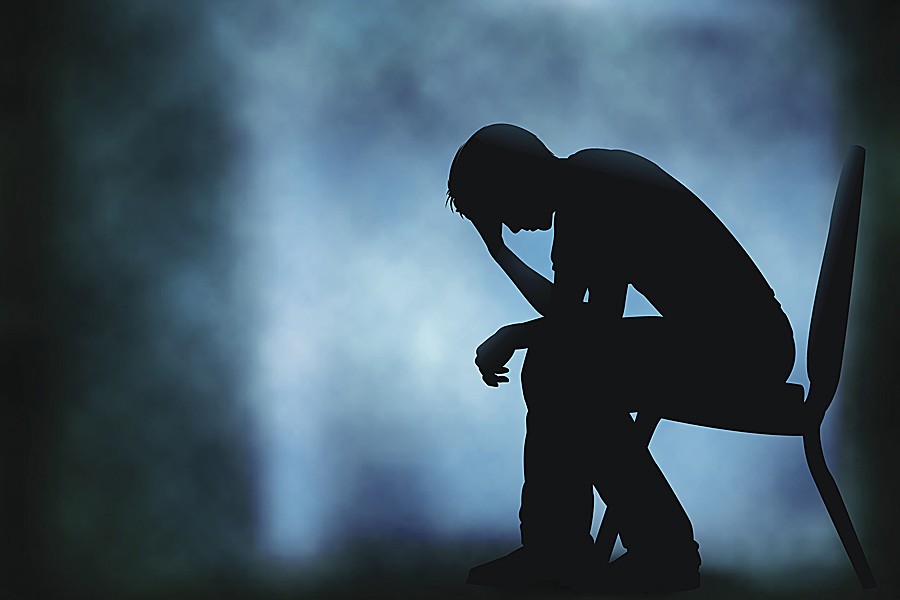Prolonged periods of loneliness and social isolation, uncertainty about the future, fear and feeling insecure about one’s health in recent years have taken a toll on the mental health of young people in the EU, as well as Europeans in general.
More than 14 million young people, between the ages of 15 and 29, had a mental health problem in 2019. These are alarming figures, and they are outdated, because they reflect a reality that existed before the pandemic period; data collected by the OECD for the “Health at a glance” report indicates that, in several member states, the incidence of symptoms of anxiety and depression among young people has more than doubled compared to the period before the pandemic. Moreover, in a recent report, UNICEF revealed that suicide is the second leading cause of death among young people in Europe, after road accidents. Unfortunately, in Romania the situation is not better. According to a brief snapshot of child and adolescent mental health, published by UNICEF in September 2022, in 2020, 48.9% of young people (average age 17) had suicidal thoughts at least once, 27.1% were sad all the time and couldn’t get rid of sadness, 21.5% had periods when they felt anxious in the last six months. Also, another comparative study indicates that the suicide rate in Romania among adolescents under 15 is higher than the European average.
Risk factors
Factors that can contribute to the development or triggering of a depressive episode are:
1. Personality traits, such as low self-esteem, a dependent, self-critical or pessimistic personality;
2. Relatives with a history of depression, bipolar disorder, alcoholism or suicide; if there have been people diagnosed with depression in the family, there is a greater risk of developing a depressive state;
3. History of other mental disorders, such as eating disorder, anxiety disorder or post-traumatic stress disorder;
4. Traumatic or stressful events, such as physical or sexual abuse, death or loss of a loved one, a difficult family relationship, divorce, financial problems, graduating from college, and lack of a clear perspective;
5. Alcohol or drug abuse;
6. Disabling somatic diseases (stroke, hypertension, myocardial infarction, late-detected cancer, leukemia, chronic pain);
7. Certain medications, such as some high blood pressure medications or sleeping pills.
Depression occurs due to a combination of factors. When these factors occur, the depressive state will increase in intensity.
Types of depression:
• Recurrent depressive disorder, if the affected person has had at least two depressive episodes (mild, medium, severe, with or without psychotic elements);
• Major depressive disorder (major depression, clinical) has intense or overwhelming symptoms that last more than two weeks. These symptoms interfere with daily life.
• Disruptive affective disorder (problems in self-control of emotions and behaviors, especially in children and adolescents);
• Perinatal depression – can occur during pregnancy and up to a year after the birth of a child; Symptoms go beyond the “baby blues,” which cause minor sadness, worry, or stress. Mothers suffering from perinatal depression feel extremely guilty, some end up hating their baby;
• Persistent depressive disorder (dysthymia) – symptoms are less severe than in major depression. A person is diagnosed with dysthymia when they have a depressed mood that lasts for at least two years;
• Premenstrual dysphoric disorder – is a severe form of premenstrual disorder. It affects women in the days or weeks before menstruation;
• Substance- or drug-induced depressive disorder – refers to depressive, anxious, psychotic, or manic symptoms that occur as a physiological consequence of substance abuse or drug use. It can occur during active use, intoxication or withdrawal;
• Depressive disorder secondary to a medical condition – direct effect of another medical condition.
• Seasonal affective disorder – usually begins in late fall and early winter. It often disappears during the spring and summer.
• Psychotic depression – people with psychotic depression have severe depressive symptoms, accompanied by psychotic symptoms (delusions or hallucinations);
It should be noted that some patients suffering from severe depression may have periods when they feel happy and very active; therefore, it is difficult for them to be aware of the difficult period they are going through.
Some holidays or personal events can accentuate depressive states; people suffering from depression are sadder, lonelier, and the experience of social isolation becomes much more intense; the difference between the surrounding joy and inner experiences deepens and becomes more painful. Time does not heal everything, such experiences should not be treated lightly, as some of us can suffer in silence from depressive states, often without really realizing their impact until it may be too late.
For the treatment of depression, most specialists say that medication (antidepressants) is not the main treatment option, but must be accompanied by lifestyle changes (regular exercise, healthy diet, enough sleep and spending time with family and friends) and psychotherapy.
Few consult a specialist and are willing to ask for help. Possible reasons are fear of social stigma, ignorance and personal pride. On the other hand, depression has a bad reputation in society, being a mental disorder.
(Psychotherapist George Mihail, [email protected])
2023-12-28 17:08:04
#Depression #risk #factors #Iasi #news #surveys #investigations #interviews #political #satire


:watermark(https://f.pmo.ee//logos/4232/4ebd6f5dc62d0c4b6f1961c46e2f0303.png,-2p,-2p,0,18,none)/nginx/o/2023/12/28/15802991t1hdfb3.jpg)